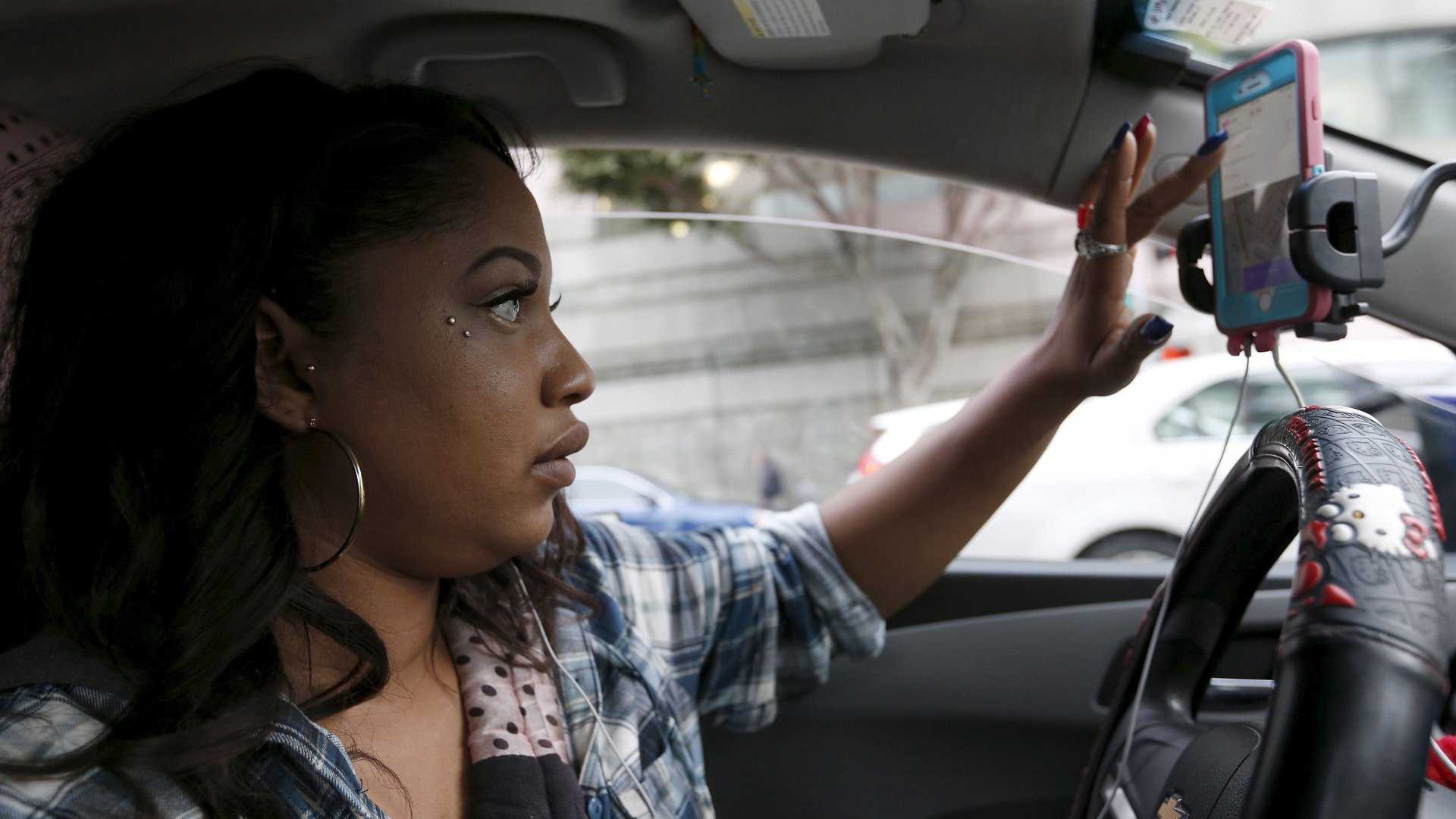Lyft drivers definitely aren’t getting rich off the company’s IPO
On March 22, an extra $1,000 appeared in Lyft driver Jay Cradeur’s bank account. It was a one-time cash bonus from the ride-hailing company, awarded to any driver in good standing with at least 10,000 completed rides on Lyft as of Feb. 25. Cradeur had nearly 15,000.


On March 22, an extra $1,000 appeared in Lyft driver Jay Cradeur’s bank account. It was a one-time cash bonus from the ride-hailing company, awarded to any driver in good standing with at least 10,000 completed rides on Lyft as of Feb. 25. Cradeur had nearly 15,000.
“I had mixed feelings,” he tells Quartz. “I was grateful that I got $1,000, and then the other part of me was like man, I did almost 15,000 rides. Just 5,000 more and I would have gotten $10,000.”
Three weeks earlier, Lyft had outlined a bonus and share purchase program for drivers as part of its initial public offering. Had Cradeur been a driver in good standing with more than 20,000 rides, his bonus would have been 10 times higher. The directed share program let eligible drivers use their one-time bonus to purchase Class A common stock at the IPO price of $72 a share.
Lyft is expected to begin trading on the Nasdaq today (March 29) at $72 a share, raising as much as $2.5 billion and valuing the company at up to $24 billion. The debut is an early test of Wall Street’s appetite for money-losing consumer-focused tech startups, many of which are expected to go public this year. It’s also a chance for companies like Lyft to redefine their relationship with drivers by inviting them to become stakeholders in the business, rather than just contractors providing a service.
“My honest thoughts on it are it’s great to get the bonus, but if you look at it in terms of rides, $1,000 for 10,000 rides is 10 cents a ride,” says Lyft driver Alex Zimmerman, who has 11,000 rides under his belt after driving full-time since February 2017 in the San Diego area. Zimmerman only recently signed up for Uber, and is mostly loyal to Lyft as a driver. “It feels like they could have done better,” he says.
Lyft and Uber have never had particularly good relations with their drivers. Ride-hail companies made a lot of mistakes with drivers at the outset, such as paying them handsomely to join up and then slashing fares, or misleading them outright about how much they could earn. Companies have also tended to treat drivers as fungible because there isn’t much to distinguish one from another. People who drive for Lyft also tend to drive for Uber. Loyalty can be hard to come by when your workforce consists of independent contractors who will work whatever gig pays better at that point in time.
“People often think ride-hailing is a rider acquisition game, but the bulk of the investment and work goes into acquiring and retaining drivers,” says Jason Post, a former Uber policy and communications director.
One way to gin up loyalty is to literally give your workers a stake in the company. Startups typically offer stock options or restricted stock units to full-time employees to help retain them and pad their compensation package, but haven’t offered the same benefits to contractors affiliated with the company. This is partly because there’s no established model for issuing equity compensation to contractors, and companies like Uber feared doing anything that would bolster the argument that their workers were employees being mislabeled as independent contractors. New York-based ride-hail company Juno ultimately scrapped a program to issue stock grants to drivers, angering workers who had banked on receiving equity.
Lyft’s directed share program, administered by Fidelity, gave drivers until 4pm ET on March 27 to indicate their interest in purchasing Lyft stock, and asked them to confirm their interest after the offering priced, according to a Fidelity email reviewed by Quartz. Driver allocations were capped at $1,000 per driver, or a maximum of 14 shares. Drivers were excluded from a lockup that restricts other participants in the directed share program, like full-time employees and board members, from selling or transferring their shares for 180 days.
After speaking with Fidelity and learning he wasn’t subject to the lockup, Cradeur put in an order for 14 shares. “If it goes up, I’ll just sell it,” he said. Zimmerman decided against buying Lyft stock, saying he needed the cash.
Lyft declined to specify how many drivers qualified for each tier of bonus, saying it couldn’t comment beyond information contained in its IPO documents. But it seems unlikely many earned $10,000. Harry Campbell, founder of driver blog The Rideshare Guy, told Quartz a driver could likely complete 120 to 150 rides a week at the most in a city like San Francisco or Los Angeles. At the high end of that range, it would take more than two and a half years of driving exclusively for Lyft to reach 20,000 rides.
Most Lyft drivers aren’t doing anywhere near that, with the company disclosing in its IPO paperwork that 91% of drivers put in fewer than 20 hours a week. The deadline for meeting the rides goals also came before the company announced its one-time bonus program, meaning drivers who were close to 10,000 or 20,000 trips in February didn’t have a chance to make a final push.
“Can you imagine if you had 19,998 rides?” Zimmerman commented on March 25, in the latest episode of a YouTube series he hosts on the ride-hail experience. “Man, I’d be pissed!”